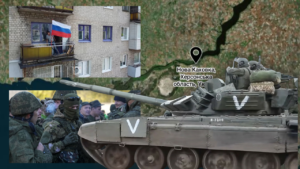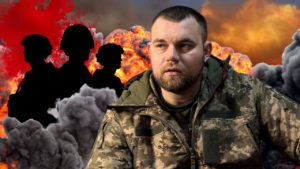Russia is Blocking the Return of Civilians Abducted from Kyiv Region: Captives Held Without Contact and Trial
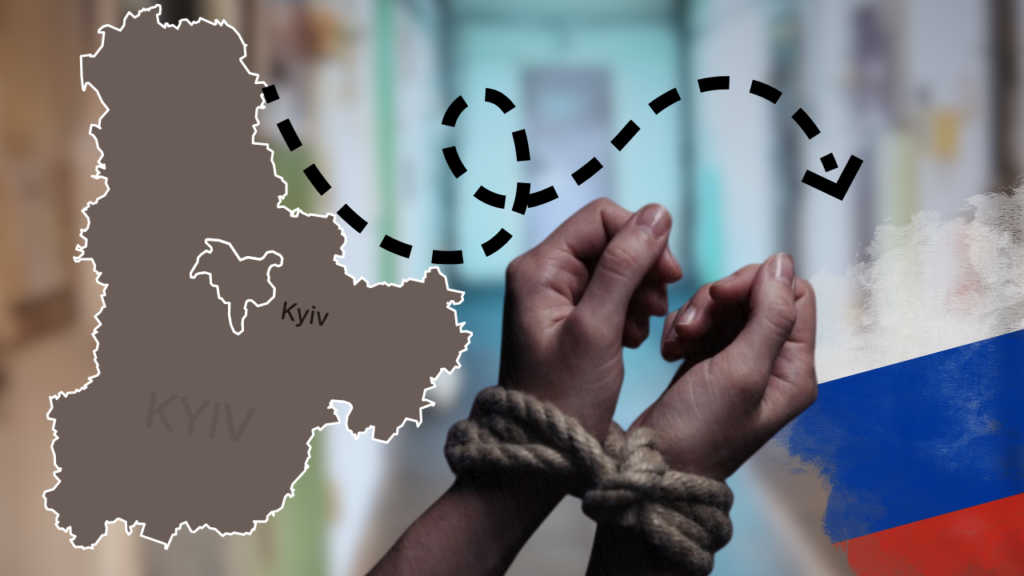
Hundreds of Ukrainian civilians taken from areas briefly occupied by Russian forces in 2022 remain imprisoned without trial. Not a single one of them has been brought before a court. The charges against them are not even stipulated in the Russian criminal code. They receive no letters or care packages, and they have no access to legal representation. Their families often learn of their whereabouts only from prisoners of war released during exchanges.
Volodymyr is visibly anxious – perhaps even afraid – as he reads a prepared statement into the camera. When he stumbles over his words, he gives a nervous smile and shifts uneasily in his chair. He repeatedly looks, as though checking whether he is saying the “right” thing. “I want to say that I’m fine…” he begins. From that moment until the end of the 50-second video, he reads out the text with his gaze fixed above the camera.
Volodymyr is one of approximately 42 civilians abducted from the Dymer community in the Kyiv region during its brief occupation by Russia. He does not disclose his location in the video. For more than three years now, he and dozens of other kidnapped civilians have been held in Russian pre-trial detention centers and penal colonies – without investigation, without trial, and with no contact with their families.
Abducted, Deported, Disappeared
On February 27, 2022, 41-year-old Yurii Liakh, a furniture factory worker, left his village of Lytvynivka and headed to Dymer to replace a punctured tire. He never returned home.
Yurii is one of approximately one hundred civilians who were kidnapped in the Dymer community alone. Some were eventually released by the occupying forces. The relatives of those whose abductions they had witnesses tirelessly pleaded with the Russian military and occupation authorities, knocking on doors daily, hoping at the very least to deliver medications and warm clothing to their loved ones.
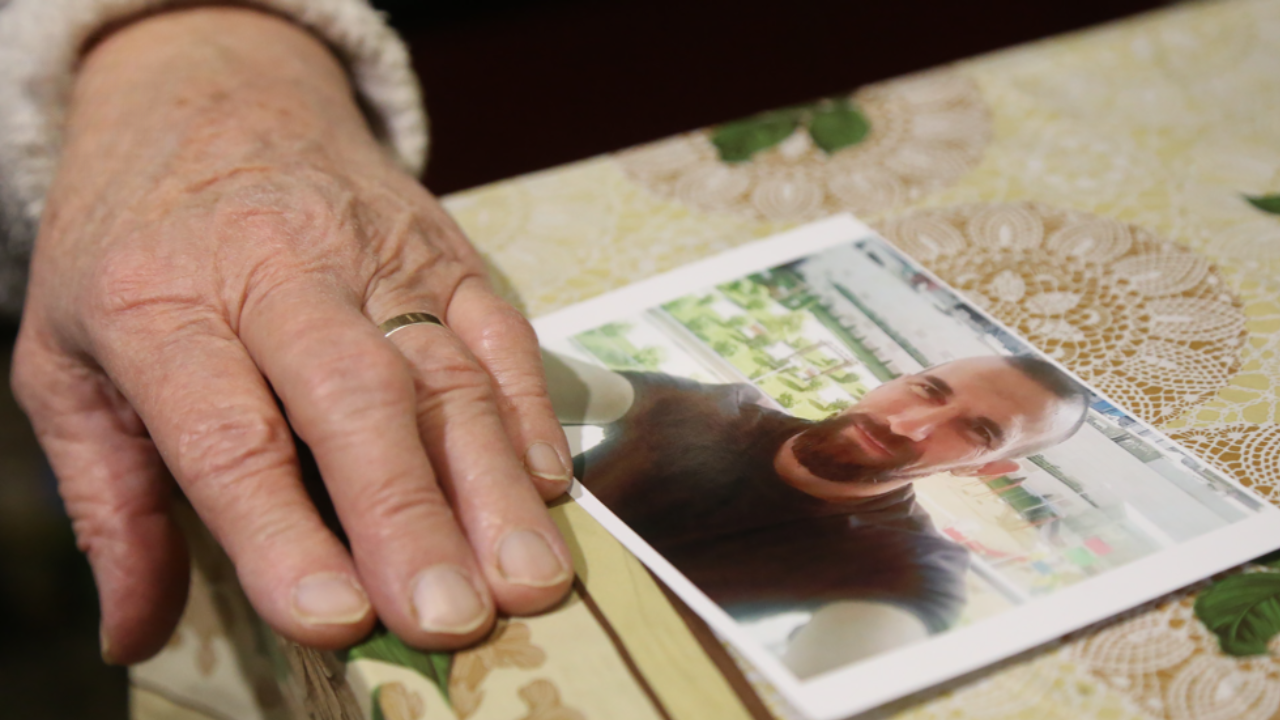
A picture of Yurii Liakh on the table in the home of his mother, Lidiia Liakh. Photo by MIHR
Many families were shocked by the news of Russia’s sudden withdrawal, as the traces of their detained sons, brothers, and husbands got lost along with the vanishing troops. Of those civilians being held as of early April 2022, some were abandoned in place. The rest were transported to Russia through Belarus.
Lidiia Liakh still does not know exactly when or under what circumstances her son, Yurii Liakh, was abducted. It wasn’t until after the de-occupation of the region that she learned through volunteers that Yurii, along with several dozen other abducted residents of the local community, had been held in the basement of a seized industrial facility in Dymer.
Later, two released prisoners of war reported hearing about Yurii Liakh: one in a pre-trial detention center in Novozybkov, Bryansk region, the other in a penal colony in Donskoy, Tula region. But no one had actually seen him.
Yurii Liakh remains one of the few individuals from the Dymer community still officially listed as missing. There are official confirmations of detention of people in Russia, mostly through the International Committee of the Red Cross.
Serhii Shpak, the same age as Yurii Liakh, was abducted on March 18 along with four other volunteers. All of them had planned to flee the occupation that evening to rejoin their families. Only one of the five was eventually released. He was taken to Russia with the rest, but was released shortly thereafter.
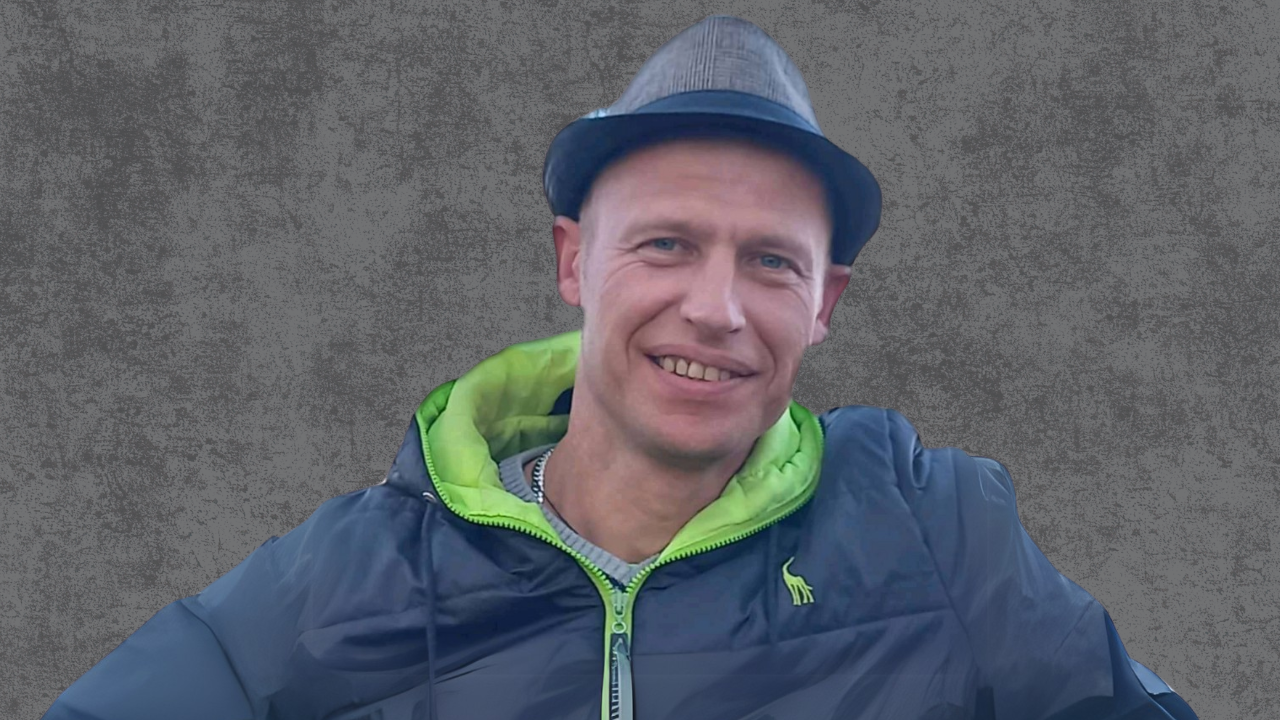
Serhii Shpak
Serhii’s wife, Maryna Shpak, received a single, brief letter from her husband. She also obtained official confirmation that he is being held in Russia, but the exact location of his detention was not disclosed. In the summer of 2023, Maryna received a phone call from a recently released prisoner of war. He had become friends with her husband and told her they were detained together in a penal colony in Kamensk-Shakhtynsky, Rostov region.
“Many people from our community are being held in Donskoy. I know of at least nine. Some are also in Pakino. There were others in Kamensk-Shakhtynsky, but we heard they’ had been transferred to other colonies,” says Anna Mushtukova, head of the Dymer community’s hostage families organization ‘Nashi Nairidnishi’ (our dearest ones). Her husband, Ivan Drozd, like other Ukrainian civilian detainees, is being held incommunicado in Donskoy.
Donskoy Penal Colony
Anna Mushtukova also has a video of her husband. In June 2024, Russia’s state-run broadcaster VGTRK released a ten-minute propaganda film. In the video, Ukrainian prisoners of war are shown reading and discussing letters from home, exercising, playing chess, and claiming they do not want to return to Ukraine, where they say they would be forced to “shoot at civilians” again. A Russian propagandist claims that “Russian correctional facilities have become a kind of refuge for Ukrainian servicemen.”
Among the prisoners of war in Russian penal colony No. 1 in Donskoy, Tula Region, Anna Mushtukova was able to identify her husband, Ivan Drozd, in several brief segments of video footage. Ivan was abducted by Russians in the Dymer community on February 28, 2022.

Ivan Drozd
Donskoy is home to two penal colonies – No. 1 and No. 5. Colony No. 1 has a bad reputation. Even a decade before Russia’s full-scale invasion of Ukraine, Russian media reported on a former prisoner’s legal battle to hold liable those who tortured and attempted to kill him. Later, there were talks about his suicide attempt.
In late 2022, the warden of the colony himself was imprisoned for accepting bribes. Reports indicated he had been charging a detainee for access to a phone and the Internet. Other members of the administration have also been caught for bribery both before and after.
In early 2022, Russian authorities began clearing space in pre-trial detention centers and penal colonies to make room for Ukrainian captives. Part of penal colony no. 1 in Donskoy was among the facilities chosen. A two-story building previously used as a pre-trial detention center was vacated.
In May 2022, the wife of a Russian inmate posted a public complaint on a messaging platform stating that long-term visits had been suspended at the colony because the rooms designated for such visits were, for undisclosed reasons, suddenly occupied by “a platoon of police officers.”
The regional penitentiary authority offered a vague explanation citing “technical reasons.” In reality, it appears that additional security personnel had been deployed to work in the pre-trial detention facility. They were rotated on a monthly basis. According to one Russian prisoner, the Ukrainian captives were kept separately from the general prison population.
The families of Russian inmates have repeatedly complained about abuse at Donskoy Penal Colony No.1 since 2022.
According to both relatives and prisoners themselves, the administration of Donskoy Penal Colony No. 1, along with select inmates, has routinely subjected detainees to torture, beatings, humiliation, and threats of sexual violence. Prisoners have also been denied the possibility to call their relatives through the prison communication system, “Zonatelecom”. Inmates were forced to work excessive hours, pay extortion fees either to the prison administration or to the criminal hierarchy (“obshchak”), and coerced into enlisting as “volunteers” to fight in Russia’s war against Ukraine.
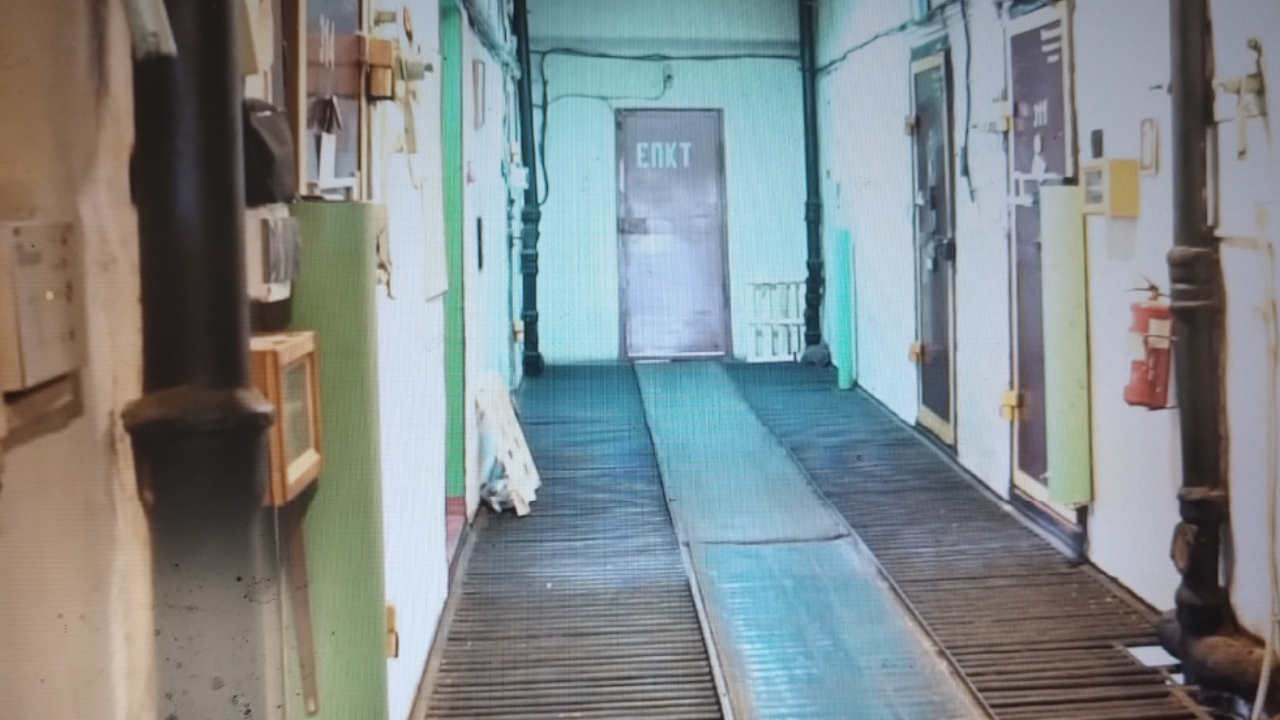
A corridor of Russian Penal Colony No. 1 in Donskoy, Tula region
Although the leadership of Donskoy Penal Colony No. 1 changed twice following the arrest of its former warden, the complaints continued.
Ukrainian captives held in the facility have been strictly segregated from Russian inmates. In fact, the last Russian prisoners were reportedly removed from the colony in early February or even as early as January 2022. Ukrainian captives began to arrive there in spring. To accommodate them, the prison administration intensified the use of space by adding extra beds to every cell. For instance, a cell designed to hold four people was converted to house six.
In 2023, around 250 Ukrainian captives were held in Donskoy Penal Colony, including approximately 50 civilians.
While authorities may have initially intended to separate prisoners of war from civilians, the overcrowding of the detention facility led to their forced cohabitation. All detainees were brutally beaten and starved from the outset. According to witnesses, the harshest treatment was reserved for captured Ukrainian marines.
The Ukrainian captives in Donskoy neither received letters from their families nor played chess, as shown in the staged footage aired by VGTRK. They were forced to stand in their cells for hours on end. They were woken up two to three times at night. They were compelled to sing the Russian national anthem.
“They took us out and beat us – blows to the neck, broken ribs. They hit our legs so hard that they locked up, and afterward we couldn’t walk. They lashed our backs with plastic batons at full force. We were forced to stand all day long. We had to do two thousand squats a day. The windows were sealed shut, and we were drenched in sweat. They beat us before and after any outdoor walk. They beat us even as they marched us back into our cells. They had a so-called ‘paramedic’, who worked in the prison infirmary and came on shift with his own twisted routines. He made up excuses to drag prisoners into the yard in the evening just to beat them up. This never ended – one cell one night, another the next, and sometimes several at once,” recalled a released prisoner of war in an interview with MIHR.
“Hunger and cold terrified us the most. You could even take the beatings somehow, but when you are starving, you just can’t stop thinking about it,” recalled another former prisoner. “Your mouth is watering like that of a pit bull, you take a piece of bread, your brain goes numb, and your whole body starts shaking. And then there’s the cold. You don’t move, every cell is freezing, and you just stand there shivering. Imagine being cold 24/7, day after day, especially at night. Every morning you wake up and think, ‘I’m still alive… but when is this going to end?’ Your clothes are stiff and cold, and you pull them on like slabs of ice.”
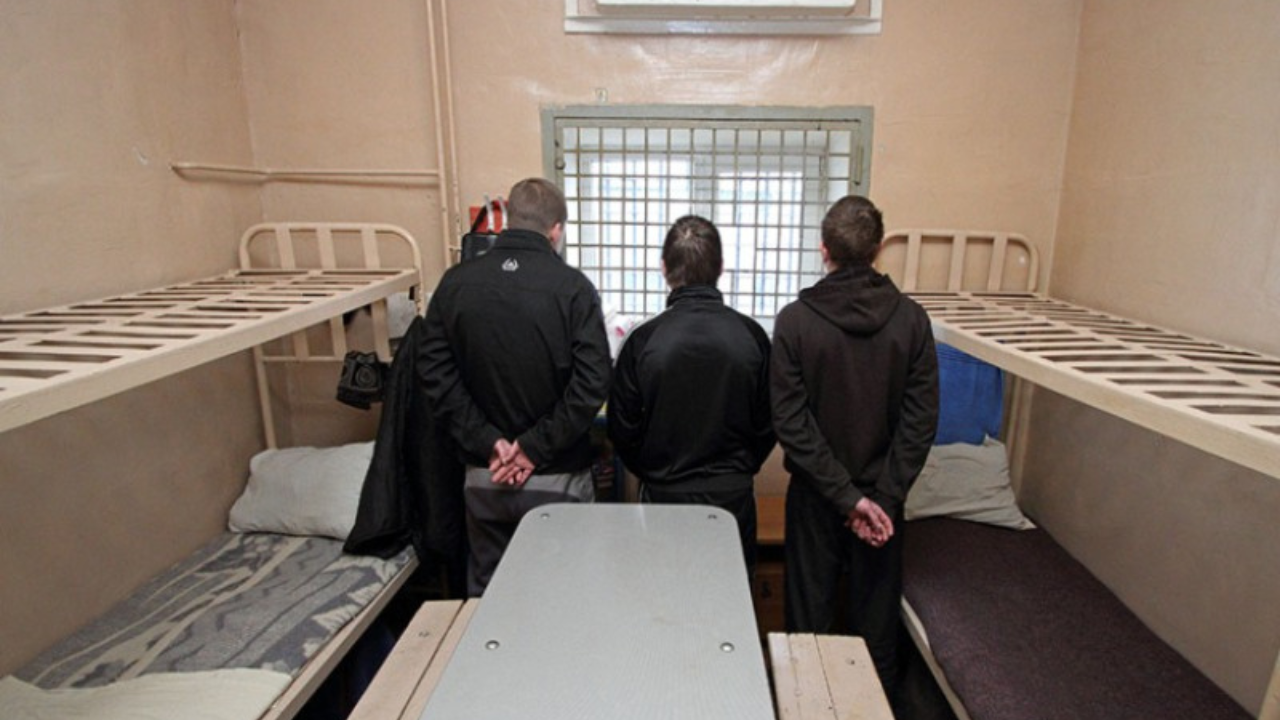
Prisoners were forbidden from sitting during the day. They were forced to stand for hours on end, which caused severe swelling in their legs
Ukrainian captives were deliberately kept in the dark about their whereabouts. Some believed they were somewhere in Siberia. They learned of their whereabouts through occasional slips of the tongue of guards or members of the prison administration, or through stamps on prison uniforms, linens, hygiene items and forms on which they were told to write letters home, which were never actually sent.
In some cases, however, prisoners who were eventually released claimed they had been held in Donskoy Colony No. 2. Such information about the possible whereabouts of her son eventually reached Lidiia Liakh, although there is no Colony No. 2 in Donskoy.
Three Years Without Due Process of Law
Without understanding these details, it’s hard to grasp how ominous Anna Mushtukova’s account is as she describes the search for her husband: “At first, everyone had heard of him, but no one had seen him. They heard about him because he sings beautifully – everyone already knew his name.”
Ivan Drozd was not a soldier. He had never even served in the military. Yet he, along with other abducted civilians from the formerly occupied areas of northern Ukraine, is being held in Russia as a prisoner of war. They are accused of “opposing the special military operation” – a charge that does not exist under the Russian Criminal Code.
At the same time, MIHR is not aware of a single case in which Russia has prosecuted a civilian abducted from Ukraine’s northern regions in 2022. This is noted by Anastasiia Pantelieieva, Head of the Documentation Department at MIHR.
Instead, she said, the so-called “trials” have been taking place in the occupied territories. However, Russian authorities falsify the dates of detention in official documents and completely disregard the months civilians were held without charges or due process.
Some residents of the occupied regions continue to be held without due process of law. Among the most well-known are the Mayor of Kherson, Ihor Kolykhaiev, and the Mayor of Hola Prystan, Oleksandr Babych. Both have been held in detention for three years.
“The Mayor of Hola Prystan is held incommunicado in a pre-trial detention facility in Crimea. Even less is known about the whereabouts of Ihor Kolykhaiev. Many people have claimed to have seen him behind bars, though it’s possible they may have mistaken him for someone else. “Otherwise, it seems as if he is being moved across Russia”, says Anastasiia Pantelieieva.
According to her, as of now, there are confirmed reports of 221 individuals abducted from Kyiv region, 35 from Sumy region, and 25 from Chernihiv region. Since Russian authorities do not conduct any formal investigations into these cases, relatives have no contact with their loved ones, even through legal counsel.
Civilians abducted by Russia are almost never returned through prisoner exchanges. And in the rare cases when they are, those returns are often marked by tragedy.
“Sadly, only one person from our Dymer community has returned so far, but in a black body bag,” says Anna Mushtukova. Thirty-eight-year-old Andrii Pashchenko died from torture in the Novozybkov pre-trial detention center back in 2022. His body was returned to the family only at the beginning of 2024.
Author: Yuliya Abibok, the MIHR journalist
This publication has been produced with the support of the European Endowment for Democracy (EED). Its contents do not necessarily reflect the official opinion of EED. Responsibility for the information and views expressed in this publication lies entirely with the author(s).



